In the late afternoon and early evening, when the summer sun is its most potent, the insects are in frenetic action. All over the garden, the tips of flowers launch into the air — if there were such thing as an insect air traffic controller, it would have lost its mind long ago. Bees, wasps, flies, moths, beetles and butterflies work to satiate their own hunger on nectar plants, while on others they gather pollen to feed their young miles away.
Above the native prairie plants — culver’s root, aster, boneset, coreopsis, milkweed, ironweed and American senna — the sound of wings can be heard 10 feet away. But over by the butterfly bush (
Buddleja davidii), one lone tiger swallowtail works the blooms, like a tourist at a restaurant the locals never visit.
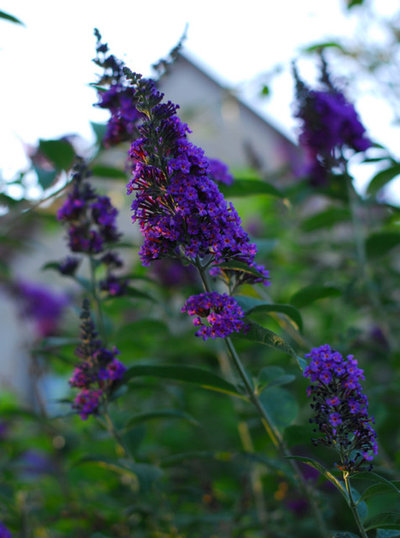 The Problems With Butterfly Bush
The Problems With Butterfly BushNo one believes me, not even when I post videos online. The butterfly bush sees one-tenth, even one-twentieth of the action of almost any other native plant. Sure, an occasional butterfly or bumblebee, a sphinx moth, may fly by, but it's hardly anything to write home about. Even just as a nectar source, other nonnatives, like lavender and caryopteris, get far more insects — and as you know, insects are the base of the food chain for birds and us.
Here's the thing about butterfly bush. It has proven invasive on both U.S. coasts. Maybe not in small backyard gardens, but birds carry off the seed to the point that it's popping up in unmanaged fields and roadside areas.
A native of Asia, it has no checks and balances in the U.S., and as a larger wildlife-supporting plant, it just doesn't pass muster. I know we all plant butterfly bush to help insects, but the plant's name is simply as successful a marketing tactic as I've ever seen.
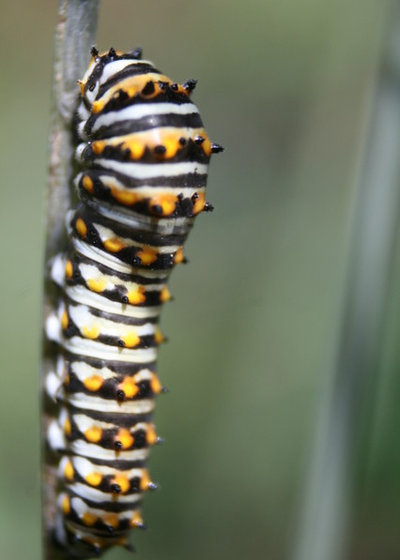
Benjamin Vogt / Monarch Gardens
If our goal as gardeners is to appreciate and support diverse wildlife — which I hope it is — in conjunction with creating an aesthetically beautiful interpretation of nature, then we have to ask ourselves these questions: How many caterpillars do we see feeding on butterfly bush? How many species of insect do we see sipping nectar from it, compared to other plants in the garden?
Butterfly bush flowers limit the types of insects that can reach its nectar, but besides this the nectar and plant have no evolutionary history with native insects — they aren't adapted to each other, so they're like perfect strangers. Butterfly bush blooms for a long time and is an easy plant to grow, but there are other plants more beneficial to native butterflies and insects that go a lot further toward attracting and maintaining insect populations.
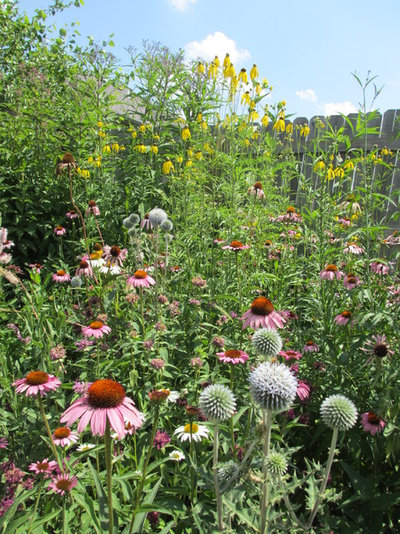
Benjamin Vogt / Monarch Gardens
What to Plant InsteadThe key to good garden design, and replacing butterfly bush, is succession gardening. This means always having something in bloom from spring through fall. When one key pollinator plant stops blooming, another turns on to take its place.
This way we can mimic the long bloom time of butterfly bush, which helps our garden aesthetically while benefiting insects. I'm going to run down a list of plants native to a large portion of the central and eastern U.S., but you should always confirm what's native to you. (Visit the websites for The Xerces Society, the Lady Bird Johnson Wildflower Center or Pollinator Partnership for helpful lists and guides.)
So here is the order I'd go with and what I'd use in areas with the medium to dry soil (clay to loam) and full sun conditions butterfly bush thrives in. And shoot, I've even tried to pick purple-blooming plants to mimic the most common bloom color of butterfly bush.
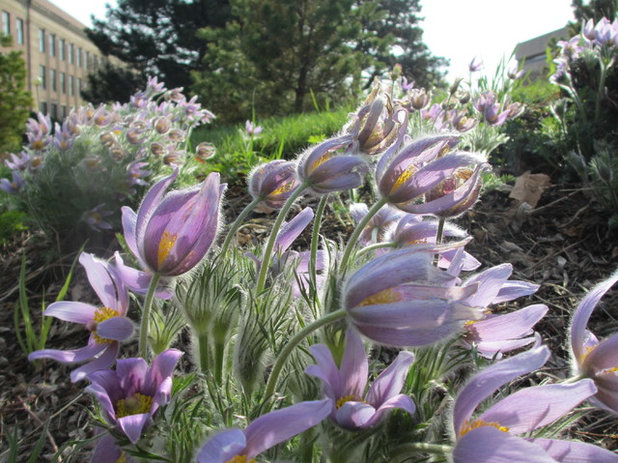
Benjamin Vogt / Monarch Gardens
Pasque flower (
Pulsatilla patens, USDA zones 4 to 9; find your zone) blooms in April in dry clay soil, and even rocky or sandy soil. It's a slowly spreading clump that blooms for several weeks and gets about a foot tall. The subsequent seed heads are quite ornamental, and it's a fun, fuzzy plant to touch; the hairs protect it from cold spring nights.
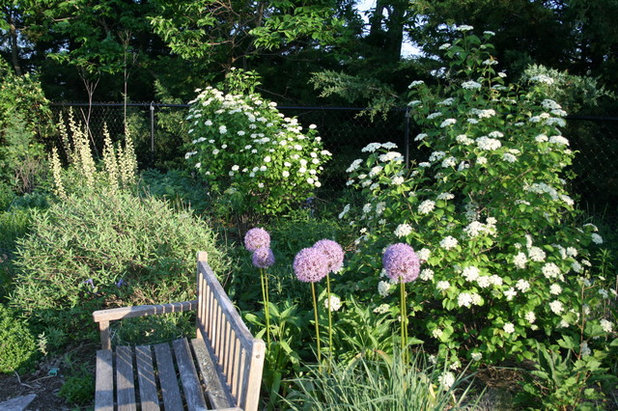
Benjamin Vogt / Monarch Gardens
If you need height and structure, let me introduce you to the drought-tolerant shrub
southern arrowwood (
Viburnum dentatum, zones 3 to 8). It’s covered in white blooms in May; late summer brings a flush of blue berries birds adore; and the fall color is bright red, yellow or orange, depending on the cultivar. It also is a host plant for several caterpillar species. It thrives in dry to medium clay in full to partial sun, getting to about 6 feet tall and wide after eight years, and it will reach a bit taller after that.
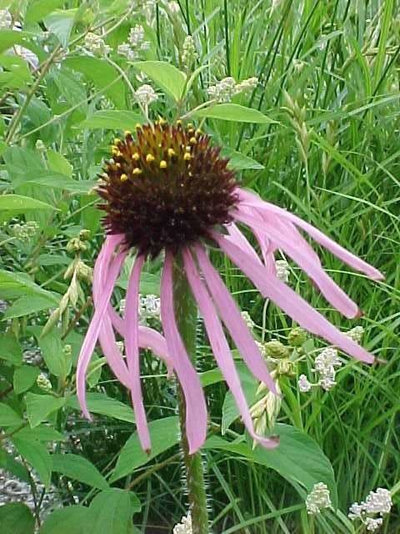
Missouri Botanical Garden
Pale purple coneflower (
Echinacea simulata, zones 5 to 8)
is one of the earliest-blooming coneflower species — if you don't have several of the species, you're missing a great diversity of blooms over a much longer time than what just
E. purpurea can give you. What makes
E. simulata unique is the very bright yellow pollen. This coneflower likes dry to medium clay soil and full to partial sun; it gets 2 to 3 feet tall and 1 foot wide.
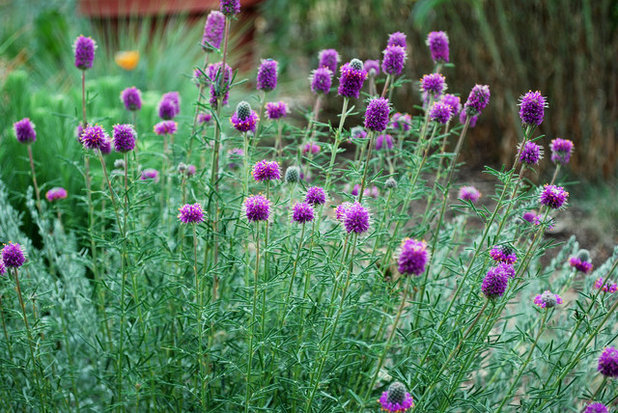
Jocelyn H. Chilvers
Purple prairie clover
(
Dalea purpurea, zones 3 to 9) is a midsummer-blooming plant that brings in the insects like nothing else. At just a foot to 2 feet tall and wide, it thrives in drier soils in full to partial sun. There's also a white clover,
Dalea candida, if you like to moon garden (don't moon the garden; I mean if you like white flowers at night when the celestial moon is out).
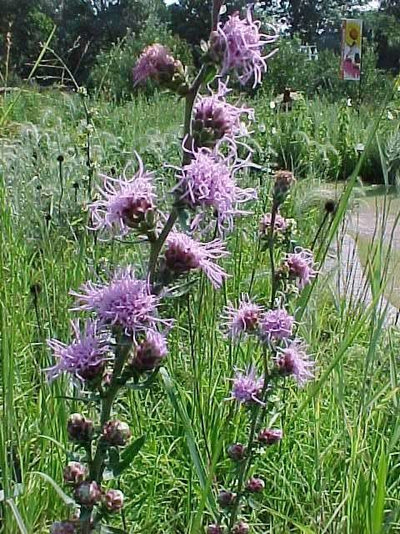
Missouri Botanical Garden
Tall blazing star (
Liatris aspera, zones 3 to 8) is a late-summer to early-fall bloomer that's about 1 foot wide and 3 to 4 feet tall. It grows in dry to medium clay soil and full sun, and it's a carefree perennial that brings in butterflies just like its monarch-attracting cousin
Liatris ligulistylis, zones 3 to 6.
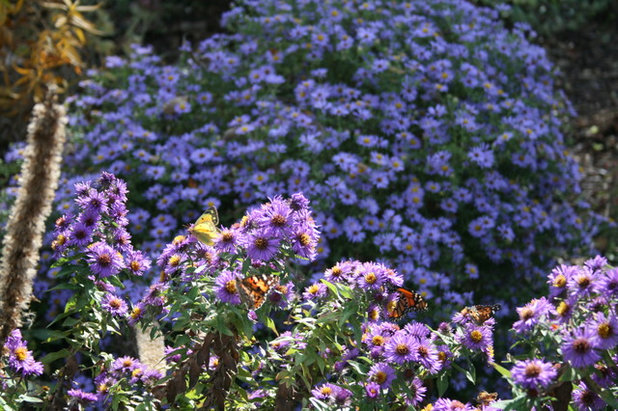
Benjamin Vogt / Monarch Gardens
And last but absolutely not least is
aromatic aster (
Aster oblongifolius, zones 3 to 10), shown in the background here. A small shrublike perennial at 2 to 3 feet wide and 2 feet tall, it blooms forever and ever from September into October with bluish-purplish flowers. It gets lots of late-season pollinator action, especially from those insects that are migrating or getting ready to hibernate.
So there's a good start for you to replace a butterfly bush with native plants that are as easy to care for but support a greater number and diversity of pollinating insects. Remember, your local choices may be different than these plants, but they'll be no less rewarding for wildlife in your area.
Will you rethink your butterfly bush? What plants native to your region do you love?
More: Why Native Plants Make Gardening So Much Better
More natives for California, the Great Lakes, the Northeast, the Central Plains





